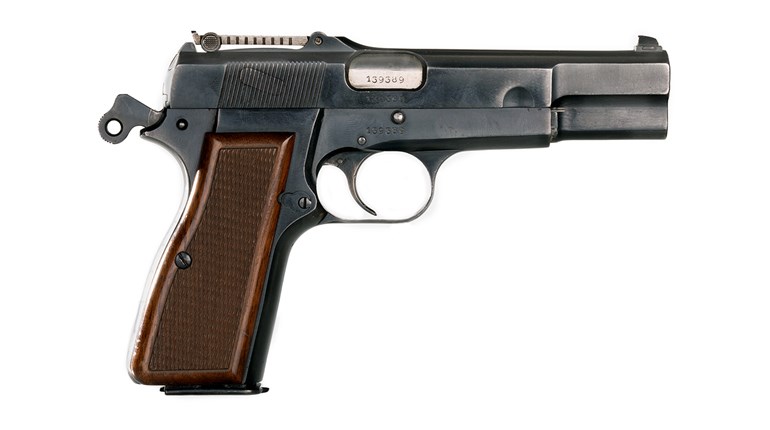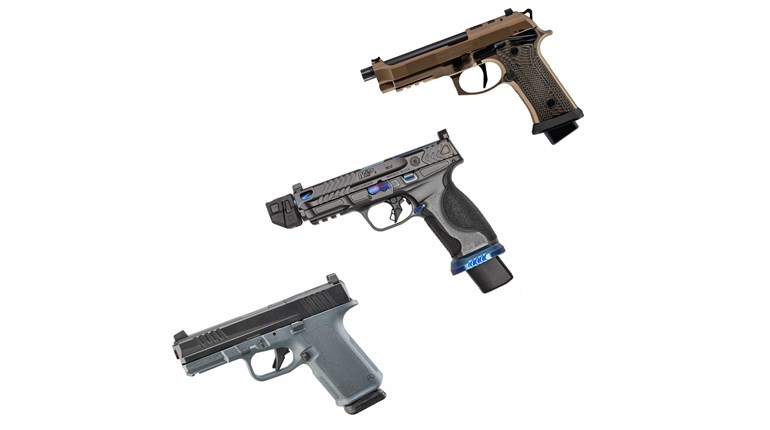
In May 1941, the German Army established a prisoner of war camp two miles south of the town of Hammelburg in Northwestern Bavaria. Designated OFLAG XIII-B (Offizierslager or “officer’s camp”), it at first held Yugoslav officers, but that changed in 1943 as the Germans began to haul in prisoners of war from the U.S. Army. Some had been captured in Tunisia and some in Italy but then, in December 1944, the Battle of the Bulge yielded a fresh harvest of American officers. As of March 1, 1945, almost 500 U.S. soldiers were being held in OFLAG XIII-B.
When Gen. George Patton’s Third Army crept within 50 miles of Hammelburg later that month, a special task force of 300 men on 57 vehicles attempted to liberate the camp, but they failed. Final liberation of the camp would have to wait until April 6, 1945. That’s when Combat Command B of the 14th Armored Division reached the front gates. Unsurprisingly, those gates were found locked, but two well-armed troops from the 47th Medium Tank Battalion quickly solved that problem through the judicious use of a famous World War II firearm: the M3 Grease Gun.

Often recognized as being a success story of small-arms design and development, the .45 ACP M3 submachine gun was born of the exigent circumstances of industrial mass production during the Second World War. It had the enormous virtue of low manufacturing costs that made it cheaper to produce than all other American submachine guns.
At peak production, M3s were a bargain at $20.94 each—less than half the cost of the mass-production version of the Thompson submachine gun (which was itself cheaper than the pre-war model). Although low cost was a major factor in the M3’s success, so too was the speed of its development and adoption.

The project went from a concept on paper, to the T20 prototype, to adoption and production within just seven months—a record that no other firearm in U.S. military history has ever rivaled. When it went into production in May 1943 at GM’s Guide Lamp Division plant in Anderson, IN, the M3 was a reliable open-bolt submachine gun weighing slightly more than 8 pounds with a fully loaded, 30-round, detachable-box magazine.
Its design made extensive use of sheet-metal stampings to include the two halves of the receiver assembly, the trigger, the rear sight, and a crank handle on the right side of the gun used to retract the bolt before firing. Not only did the M3’s sheet-metal construction make it lighter and cheaper, it also gave the gun an appearance resembling one of the most-ubiquitous tools of the auto-repair shop: the mechanic’s grease gun.
On Tuesday, June 6, 1944, U.S. troops used the M3 Grease Gun in action for the first time. During the weeks that followed, it fought a vigorous campaign stretching from Normandy through to the liberation of Paris and the push to the Siegfried Line. Soldiers carried it up hills and down valleys through the adversity of dust, rain and, eventually, even snow. M3s fought the Battle of the Bulge, crossed the Rhine River by boat, parachute and glider, and they eventually even blew the locks off of the front gate of OFLAG XIII-B.
Concentration camps were liberated by men carrying them, and islands in the Pacific were captured by men fighting with them. Although Gen. Patton described the John Garand’s M1 as “the greatest battle implement ever devised,” perhaps the same can be said about George Hyde’s M3. When you consider how quickly this paragon of rugged dependability went from drawings on paper to the gates of the prisoner of war camp at Hammelburg, it certainly seems like Patton’s endorsement fits the M3 just as nicely as it does the M1.
But, in a way the Grease Gun is a fitting metaphor for the American experience in World War II in so far as it is a blend of ingenuity, engineering competence, innovative industrial design and economy. When the U.S. military needed a submachine-gun design combining those ideals, General Motors (with a little help from Buffalo Arms) delivered for the war effort in an impressive way. Between 1943 and 1945, more than 606,000 M3 submachine guns were made.
Although its total production did not surpass that of the M1, the Grease Gun’s service longevity did. Examples of the product-improved M3A1 served the U.S. military through to the 1990s. When the miniscule per-unit investment of just $20.94 is taken into consideration, one can only conclude that the U.S. government got its money’s worth out of the Grease Gun.
But, the men being held inside OFLAG XIII-B didn’t care about any of that. They were probably far too busy being grateful for their deliverance from captivity to be impressed by the inexpensive yet effective little submachine gun that had just opened the gates.




































